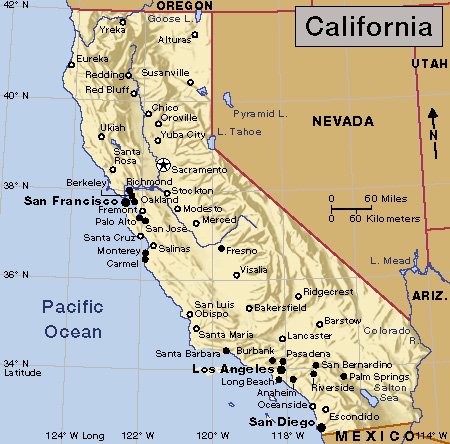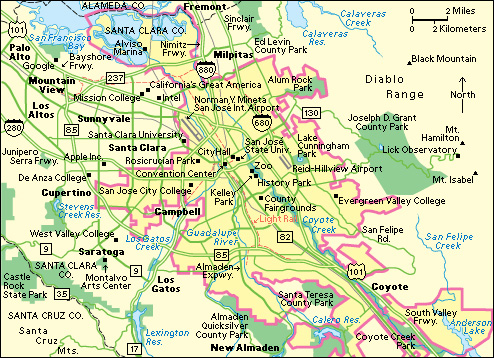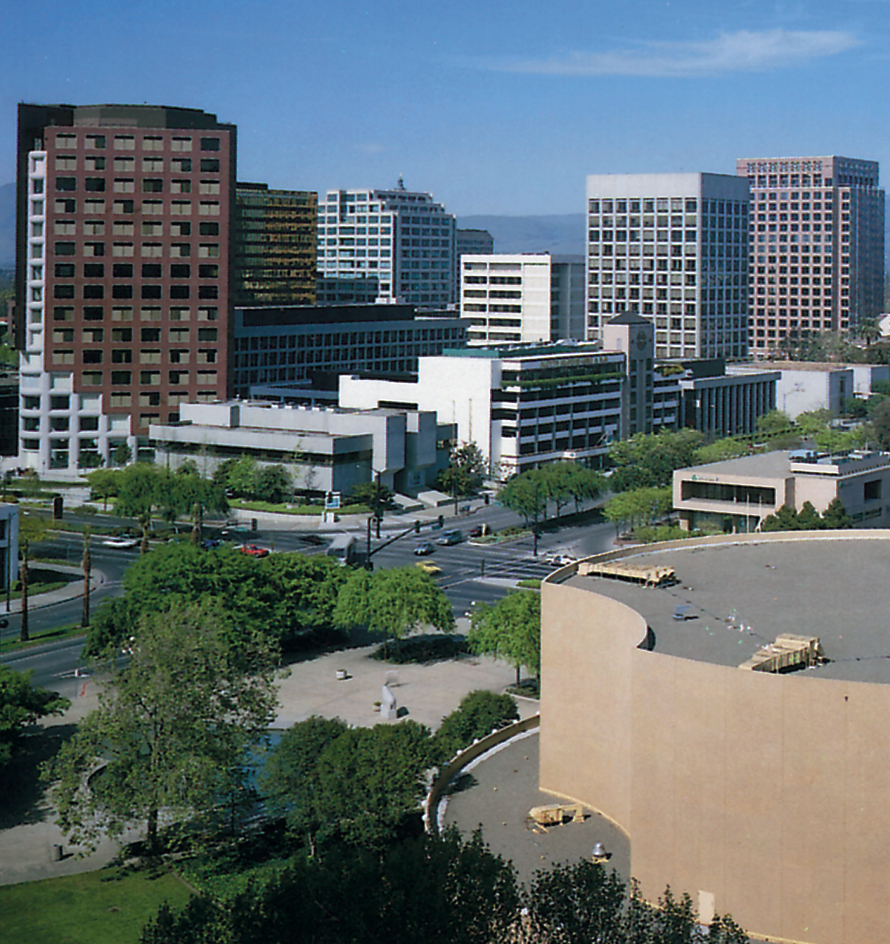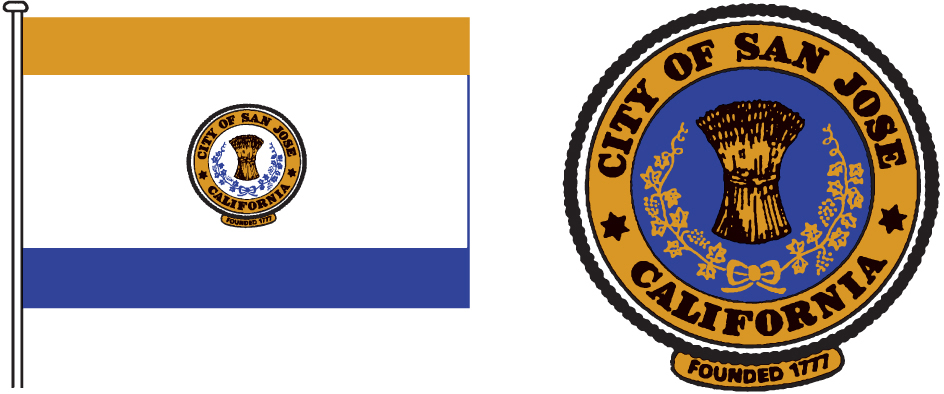San Jose << `san` hoh ZAY >> is the third largest city in California and a center of high-technology manufacturing and research. Among California cities, only Los Angeles and San Diego have more people.

Spaniards founded San Jose in 1777. They named the town Pueblo de San Jose de Guadalupe in honor of Saint Joseph. San Jose became California’s first capital in 1849. San José State University, which opened in 1871, was the state’s first public college. Until the 1950’s, San Jose was known as a farming center and the home of the college. During the 1950’s, however, the city’s industry expanded rapidly, and its population greatly increased. Since then, San Jose has continued to be one of the fastest-growing cities in the United States.
The city.
San Jose lies in the Santa Clara Valley, between the Santa Cruz Mountains on the west and the Diablo Range on the east. The city is the seat of Santa Clara County. The San Jose-Sunnyvale-Santa Clara metropolitan area extends over San Benito and Santa Clara counties.

The heart of downtown San Jose is the intersection of Park Avenue and Market Street. The public buildings in this area include state and federal government office buildings, the San Jose McEnery Convention Center, the San Jose Center for the Performing Arts, and the San Jose Museum of Art.
About 40 percent of San Jose’s people are Asians. Another 30 percent are Hispanic. In addition, the city’s diverse population includes people of European descent, African Americans, and Native Americans.
Economy.
The greater San Jose area has thousands of manufacturing plants. They employ a large percentage of the area’s workers. Electronics manufacturing ranks as the leading industry. Products include computers, computer software, semiconductors, and other electronic equipment. The area has become known as the Silicon Valley because of its many computer and computer-related manufacturing and service industries. Silicon is used to make tiny computer chips, a basic part of many electronic devices. The area’s other manufactured goods include aerospace products, chemicals, and fabricated metals.

Truck lines and railroad passenger and freight lines serve the city. The Norman Y. Mineta San Jose International Airport lies near the downtown area. The city has a daily newspaper, the San Jose Mercury News.
Education and cultural life.
San Jose has a number of public school districts, the largest of which is the San José Unified School District. The city also has several private and parochial schools. San José State University is in downtown San Jose. Nearby universities include Stanford University near Palo Alto and Santa Clara University in Santa Clara. The San Jose Public Library has branches throughout the city.
San Jose has a ballet company, theater companies, an opera company, and a symphony orchestra. They perform in the Center for the Performing Arts and other downtown locations. Museums in San Jose include the Museum of Art, the Children’s Discovery Museum, and the Tech Interactive.
Recreation.
San Jose has many parks and playgrounds. Alum Rock Park, the largest, features unusual rock formations and active mineral springs. Kelley Park includes a Japanese tea garden and a zoo. It also includes History San José’s History Park, where visitors may go through a village that re-creates life in the city in the 1800’s and early 1900’s. The San Jose Municipal Rose Garden includes thousands of rose shrubs displaying hundreds of kinds of roses. Rosicrucian Park includes a planetarium, a museum with exhibits on Egyptian history, and the Peace Garden. Rosicrucian Park is operated by the Rosicrucian Order, an international fraternity. San Jose has a professional hockey team, the San Jose Sharks of the National Hockey League. The city is also the home of the San Jose Earthquakes of Major League Soccer.
Government.
San Jose has a council-manager form of government. The voters elect a mayor and 10 district City Council members—all to four-year terms. The council hires a city manager as the administrative head of the government. The city manager carries out council policies, prepares the budget, and appoints and dismisses department heads. San Jose gets most of its income from taxes on property, sales, and utilities.
History.
The Indigenous (native) Ohlone people lived in the San Jose region before the first European settlers came. In 1777, Spanish colonists founded San Jose on the banks of the Guadalupe River.

The town came under Mexican control during the 1820’s. It grew slowly until the 1840’s, when American pioneers began to arrive from the East. The United States acquired California from Mexico in 1848. San Jose was California’s first capital, from 1849 to 1851. In 1850, when San Jose was incorporated as a city, it had a population of about 3,000. That same year, a stagecoach line linked San Jose and San Francisco.
In 1864, a railroad line connected San Jose and San Francisco. The railroad helped cause a land boom in San Jose, and the city’s population reached 9,089 by 1870. Agriculture flourished in the San Jose area during the late 1800’s. Apricots, grapes, and prune plums became valuable crops.
During the first half of the 1900’s, the city continued to be chiefly a farming and commercial center for the area south of San Francisco Bay. In 1950, prune plum orchards covered about 86,000 acres (34,800 hectares) near San Jose, and the city was known as the prune capital of the world.
Manufacturing grew rapidly in the San Jose area during the 1950’s. The aerospace and electronics industries built large plants in metropolitan San Jose, and the area began to shift from a rural, farm economy to an urban, industrial economy. Jobs created by the new industries caused a population boom in San Jose. By 1960, the city had more than 200,000 people.
San Jose started to annex nearby vacant land during the 1950’s. Between 1950 and 1980, the city’s area increased from 17 to 157 square miles (44 to 407 square kilometers). Large housing developments spread across former orchards and pastures. The loss of farmland caused the area’s once-thriving canning and food processing plants to move elsewhere. But further industrial expansion helped San Jose continue to grow. By 1980, the city’s population had increased to about 630,000.
In 1968, work began on a downtown urban renewal project called Park Center Plaza (now CityView Plaza). This project, completed in the late 1980’s, included construction of several banks, office buildings, and a hotel. Work on the Fairmont Plaza was completed in the 1990’s. The center included condominiums, a hotel, shops, an office tower, theaters, and an art museum.
In October 1989, a destructive earthquake struck the San Jose–San Francisco–Oakland area. It caused about $700 million in property damage in Santa Clara County.
By 2000, San Jose’s population had grown to nearly 900,000. Several problems resulted from the city’s rapid growth. Transportation and sewerage systems nearly became overloaded. Growing demand for housing helped cause soaring housing prices.
San Jose continued to grow, but at a slower rate, during the early 2000’s. In 2003, the Dr. Martin Luther King, Jr. Library opened downtown. The new library center combined the city’s main library with the library of San José State University.
The area’s housing prices dropped dramatically in 2008, during a national economic downturn. By 2020, San Jose had a population of over 1,000,000.
